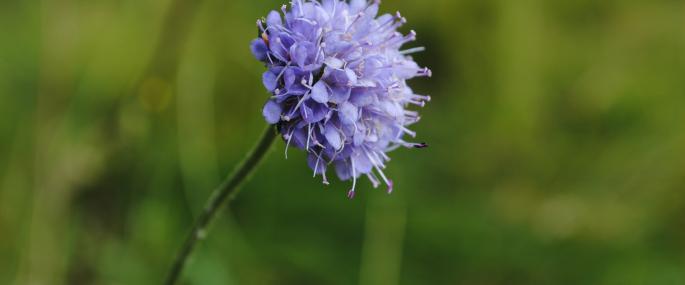The rounded and nodding, purple-blue flower heads of Devil's-bit Scabious can be found in damp meadows and marshes, and along woodland rides and riverbanks. It is in bloom between July and October, its pincushion-like flower heads attracting a wide variety of butterflies and bees. It is also the foodplant for the declining Marsh Fritillary Butterfly which is classified as a Priority Species in the UK Biodiversity Action Plan.
Our native wildflowers, such as Devil's-bit Scabious, provide important links in the food chain for many other animals, including rare species like the Marsh Fritillary Butterfly. The Wildlife Trusts recognise the importance of healthy habitats to support all kinds of species throughout the food chain, so look after many nature reserves for the benefit of wildlife. You can help too: volunteer for your local Wildlife Trust and you could be involved in everything from coppicing to craft-making, stockwatching to surveying.
